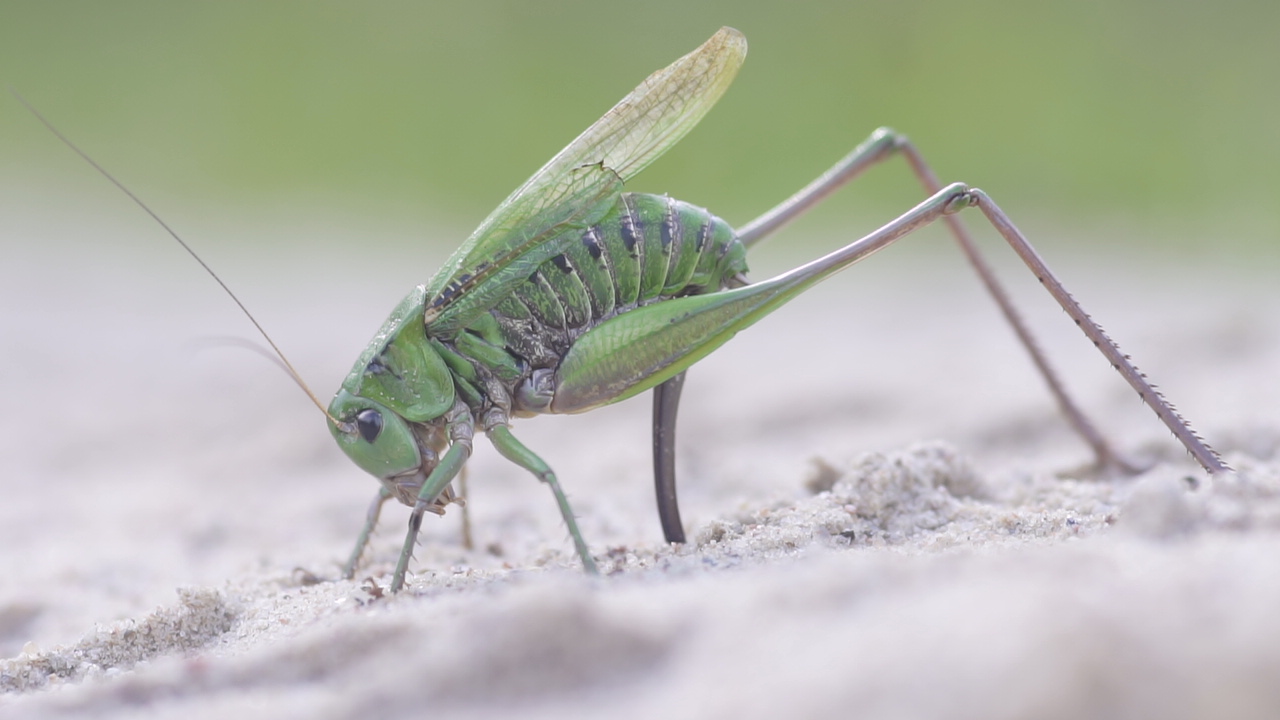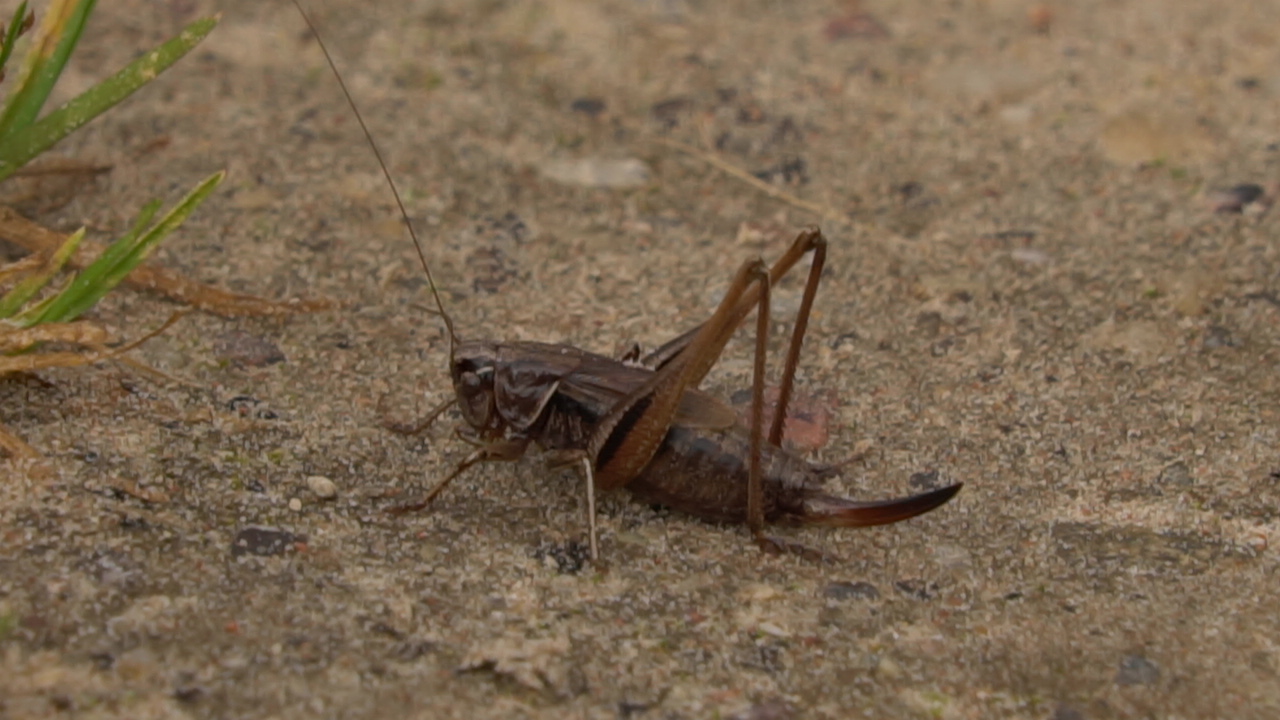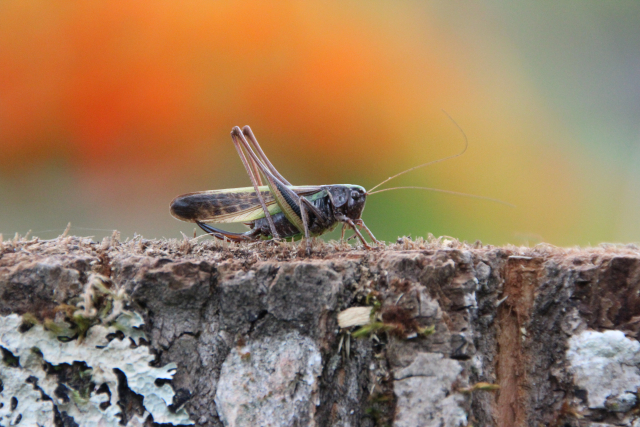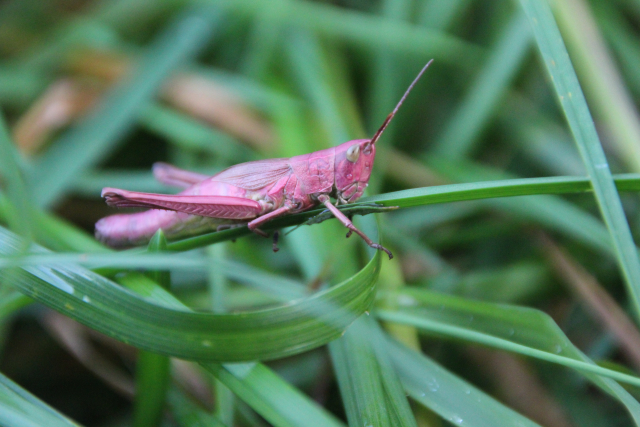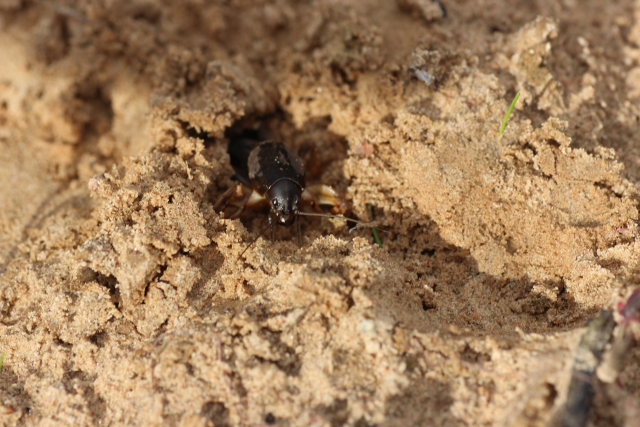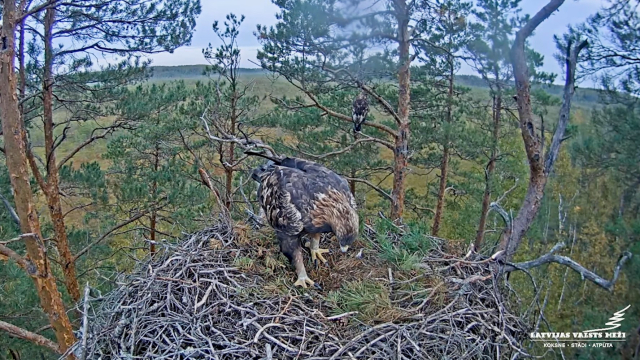Similarly, as roes are not deer’s wives or “mothers”, locusts also aren’t “kids” or tiny grasshoppers, like people sometimes tend to deem. Though, both relatives of the grasshopper and real locust family belongs to the orthopteras order – thus locusts truly are close systematic relatives to the grasshoppers, however, they are not their successors. This time, Ilmārs Tīrmanis, nature researcher, talks about the similarities and differences amongst insects.
In Latvia, grasshoppers and locusts belong to the relatively lesser researched group of insects. We have about 14 species of grasshoppers and half as many species of locusts. Most of these orthopteras don’t have a Latvian name.
What do both have in common?
Even though at first glance grasshoppers and true locusts are truly similar, when you look closer, you can notice several essential external differences. The most noticeable one is that for both genders’ grasshopper tentacles reach full length of body but with locusts they never reach over half their body. Grownup grasshopper mothers, aside from locust mothers, have noticeably larger ovipositors.
Locusts from grasshoppers differ not only visually but also with their menu. All locusts digest only plants, however, part of the grasshoppers are carnivores, while, others eat both meat, plant, and even lichen. However, grasshoppers and locusts are eaten by different insectivora creatures. Locusts are often killed by mushroom Entomophaga grylli. This locust pathogenic mushroom before killing its prey, builds in it an inclination to grow upwards the plant stem, dying – grasping it. Why? Because being in the stem, the dead stem practically creates a larger distribution are for spores.
Grasshoppers as well as locusts and other orthopteras have several characteristic features in common. These insects have a thorax that is grown with its head. Their hind legs are long and strong, made for jumping, their thighs are noticeably thicker and muscled. Orthopteras have also segmented tentacles, compound eyes, and a rodent-like mouth. Some species have developed two pairs of wings: the forewings, or elytra, under which are the hindwings, which are folded when the animal is not flying. Most species have developed sound-producing (stribulation) and sound-receiving (tympanic) organs. Females are usually taller than males.
Short life cycle
Grasshoppers and locusts belong to annual insects. Their adult representatives, if lucky, live only one warm season. Hibernation takes place in the egg stage.
These insects develop with incomplete metamorphosis – without a pupal stage. In May, small insects, very similar to adults, but without wings, hatch from eggs laid and overwintered in the previous year's late summer or autumn. As the summer progresses, these animals change their coat several times and grow bigger and bigger until they finally turn into sexually ready custodians. Intensive feeding follows – providing energy reserves. Soon after that, the period of "making music" begins and continues. The result is mating. After mating, males languish for a while and then die. Females mature the eggs in themselves, lay them and follow the males.
Tetrigidae, which, according to the Latvian name, are tiny, only about a centimeter long, are also included in the order of the right wings and are therefore included among the systematic relatives of the true grasshoppers and grasshoppers. At least four species of these insects live in the wild in Latvia. Unlike real locusts, their males have lost the ability to chirp or chirp, thus also losing their hearing.
Grasshopper and locust melodic song
At the end of summer, if it does not rain heavily and the wind does not blow, and in the beginning of autumn, if it is not too cold, grasshoppers and real locusts are very often visible in meadows, pastures, bushes, forest edges, forest edges, clearings, and swamps. They are not only visible, but also audible. During daylight hours, you can hear both the chirping of grasshoppers and the chirping of locusts. But in the dusk and darkness of the night, all the locusts are silent, then only the chirping of a few species of grasshoppers is heard. Often it sounds from a very high height in the foliage of trees. Stribulation, or hissing and chirping, is performed only by males. Each species of orangutan produces a specific, different sound.
If a warm fall sets in, you may still be able to hear and see some warblers and chirps well into October.
Male grasshoppers produce their relatively distant chirp by rubbing the bases of their forewings together. By chirping, they call females to meetings. Female grasshoppers listen to the "songs of worshipers" with the hearing organs, which are located on the forelegs in the form of elongated pins in grasshoppers living in Latvia. Although, truly, there is an exception – the oak grasshopper endowed with a unique communication mechanism. Representatives of both sexes of this species use dipping to communicate with each other: drumming with their feet on a tree branch. Grasshoppers do not have ear lobes, but they perceive vibrations well.
The true locusts of all species living in Latvia, unlike grasshoppers, who operate their music-making mechanism only during the light period of the day. Their males chirp by rubbing their legs, or hind legs, which have special teeth on their insides, along their forewings. The hearing organs with which the females hear the call of the males are located on the sides of the first segment of the segmented abdomen in true locusts.
Latvia’s common – mole cricket
The only representative of the Gryllotalpidae family is the mole cricket, which is also known in the vernacular as the earthworm, chervil, and feverfew. The name given by scientists to the digger cricket allows us to understand that this animal digs the ground or, to put it more delicately, moves through the underground passages dug by itself. It's not for nothing that the forelegs of the mover have transformed into digging legs – just like a mole! In addition, it is a nocturnal animal, so it is relatively difficult to detect visually. However, it is easily audible, because where earthworms live, their presence is usually announced by the sound made by adult males of these insects – monotonous trills.
Unlike our other orangutans, woodpeckers are long-lived. They develop slowly, so they reach "adulthood" and take care of the creation of offspring for the only time in their life only in the third year of their life. Though, after that these insects also die.
